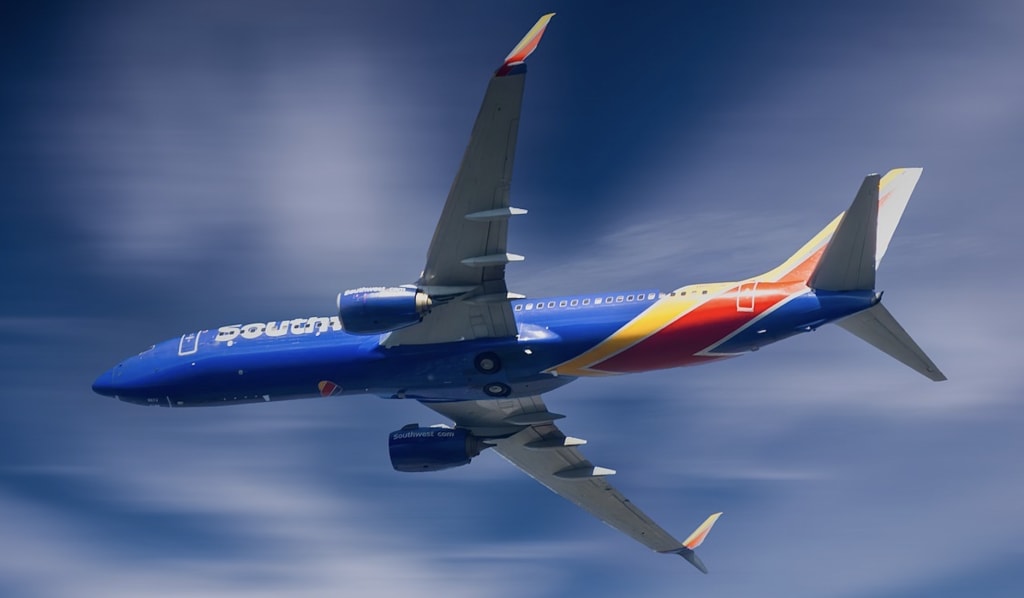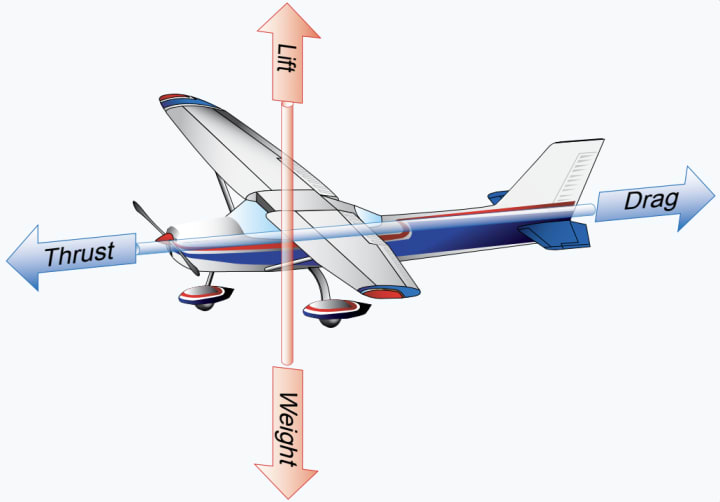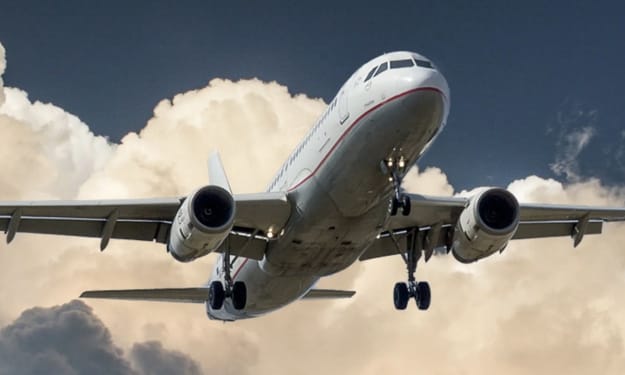How Does A Plane Fly
Ever wondered how a huge aircraft takes off

How does an airplane fly? This is one of the most intriguing question we ask ourselves since childhood. Whenever we watch an aircraft flying across the sky, we wonder, how such a heavy object can effortlessly navigate through the air.
In this article, I will briefly explain in a few easy-to-understand sentences, the principles behind how a plane is able to take flight.
This material is copyrighted by the author. Do not republish, copy, or sell this material without exclusive permission from the author of this article. The images used in this article are sourced from the public domain. Links are provided at the end of this article.


This article provides a simplified overview of flight for beginners.
Let’s get onboard, fasten our seat belts, and discover, how an airplane takes flight.
Basic Understanding
Every object carries some weight, and due to gravity all the objects remain on the ground. In order to fly an object in the air, the first step is to “lift” it off the ground.
Once in the air, we need to generate enough lift to counteract its own “weight”, and remain suspended. Otherwise, gravity will cause the object to fall back to the ground.
After achieving lift-off, the next step is to move that object through the air. This requires applying some force or a “thrust” to keep the object moving forward, against the resistance of the surrounding air. This resistance or the opposing force is known as “drag”.
Forces acting on a plane
We observe that there are four basic forces that act upon an object, or an aircraft: Lift, Weight, Thrust, and Drag. (Refer figure)

So let us examine the definition of each of these four forces:
- Lift is the force that keeps the plane in the air. It is generated by the wings of the plane as they move through the air.
- Weight is the force of gravity pulling the plane down towards the ground.
- Thrust is the force that propels the plane forward. This is usually provided by the engines.
- Drag is the resistance of the air as the plane moves through it. It acts opposite to the direction of motion.
In order to get a plane up in the air, it first needs to generate enough lift to overcome its weight. This lift is primarily generated by the wings. To generate lift, there needs be some pressure underneath the wings to lift the plane up in the air.
How do we generate lift under the wings?
To generate lift, the plane must first gain forward momentum on the ground by applying "thrust." This thrust, which propels the plane forward, is provided by the engines.
When the plane is on a runway ready to take off, the pilot pushes the throttle of the engines, which increases the rotation speed of the propeller in a single-engine plane or the turbofans in a jet engine.
As the propeller or turbofans start to rotate at higher speeds, the plane begins to move forward. This movement is caused by the thrust generated by the engines.
How does an airplane take-off?
As the plane speeds down the runway, the wings experience an increasing flow of air. The wings are designed with a curved shape to produce different airflows on the top and bottom surfaces (Refer figure).

This shape results in the air moving at much higher speed over the curved top surface, than the air flowing on the flat bottom surface. This results in low air pressure on the top of the wings compared to the bottom of the wings. This pressure difference produces lift, allowing the plane to rise into the air.
The fast moving air flows over the wings, generate lift. At the same time, the engines also provide enough thrust to overcome the drag caused by the resistance of the air.
Once the plane has gained enough speed and lift, the pilot pulls back on the “elevator” controls in the tail to raise the nose of the plane off the ground.
After generating sufficient lift and thrust, the plane is then able to take off (Refer figure).

In conclusion, a plane flies by generating lift with its wings, overcoming weight with thrust, and overcoming drag by moving through the air.
Once in the air, the pilot applies various controls on the wings and the tail of an airplane, to navigate the plane to turn right or left, ascend to higher altitude, or descend the plane for landing.
Thank you for taking the time to read this article.
I hope you enjoyed this topic and found it informative. I also hope that reading this article has inspired you to learn more about planes, and consider taking flying lessons in the future.
If you have any questions or comments, please feel free to share them below.
To learn more about how an airplane navigates in the sky, let us deep dive further into understanding the aircraft parts and the basic principles of flying that is covered in the next article here.
References for pictures:
- Southwest Airlines plane soaring through the sky https://pixabay.com/photos/airplane-plane-flight-sky-travel-7621948/
- My childhood dream to fly picture https://pixabay.com/illustrations/fantasies-falls-flights-balloons-4065880/
- United Airlines flying high https://www.pexels.com/photo/airplane-with-landing-gear-flying-over-blue-sky-6252320/
- Four forces acting on an aircraft https://www.faa.gov/sites/faa.gov/files/regulations_policies/handbooks_manuals/aviation/phak/07_phak_ch5.pdf
- Airflow over the wings and how lift is generated: Author’s drawing under copyright
- Thai Airways takeoff: https://pixabay.com/photos/plane-boeing-747-zurich-start-3747286/
About the Creator
Raghavendra S Rao
Passionate about life, people, animals, nature, and surroundings. Love flying airplanes. Educate everyone in various phases of life. Love technology. Learn new things. Help and contribute time and money to the less fortunate.






Comments
There are no comments for this story
Be the first to respond and start the conversation.